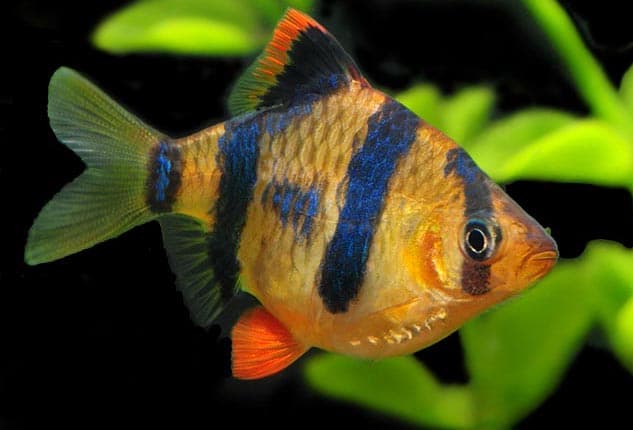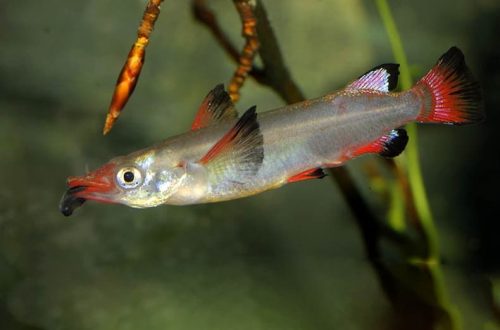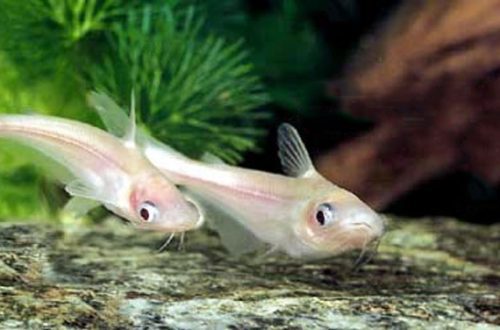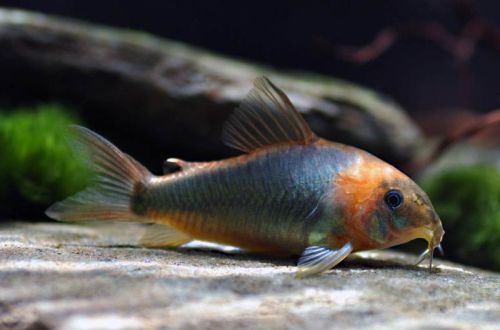
Barbus Sumatra
The Sumatran Barb, also known as the Tiger Barb, scientific name Puntigrus tetrazona, belongs to the Cyprinidae family. It is considered one of the most famous and widespread aquarium fish. For many decades, it has been popular due to its unpretentiousness and spectacular appearance.

There are many breeding forms, such as the “Green Barb” and “Albino Barb”, and a transgenic variety has been bred that has a fluorescent gene, thanks to which the fish have acquired the ability to glow in the dark.
Regardless of the variety, these fish are unpretentious and perfectly adapted to life in home aquariums. Barbus Sumatran can be recommended to aquarists of any experience.
Contents
Habitat
The fish first received a scientific description in 1855, during studies of the flora and fauna of Southeast Asia in the modern territories of Sumatra, Borneo, Thailand and Cambodia. The homeland of fish is considered to be the island of Borneo. At present, wild populations have been introduced to Singapore, Australia, the USA and Colombia. It is likely that they spread further across the continents.
Barbus prefers calm forest streams rich in oxygen. The ground consists of sand and stones. Dense vegetation serves as a shelter and a place for obtaining food. The fish feeds on small invertebrates and vegetation, such as insects and their larvae, crustaceans, diatoms and other plankton.
Brief information:
- The volume of the aquarium is from 50-60 liters.
- Temperature – 20-26°C
- Value pH — 6.0–8.0
- Water hardness – from soft to medium hardness (5-19GH)
- Substrate type – sand
- Lighting – moderate
- Brackish water – no
- Water movement – light or moderate
- The size of adults is up to 7 cm.
- Food – any food
- Life expectancy – up to 6-7 years
Description
The fish has a rounded body with a high dorsal fin and a pointed head, giving it a swift outline. The predominant body color varies from yellow to reddish with a pattern of four black vertical stripes. The presence of stripes is reflected in one of the names of this species – Brindle. The fins and tail are often colored reddish.

Sexual differences
The female looks larger, especially during the spawning season, while the males have a red head at this time, and in general their color is brighter.
Food
Omnivorous species. The basis of the daily diet can be a variety of dry, frozen or live food. For example, daphnia, bloodworms, brine shrimp, etc.
Maintenance and care
Barbus Sumatran does not make high demands on its content. The optimal size of the aquarium for a group of 5-6 fish starts from 50-60 liters. The standard set of equipment consists of a filter, a heater and a lighting system. The filter, in addition to cleaning, will ensure the movement of water, which will keep the fish in good shape and has a positive effect on the color of the males.

The design should, if possible, repeat the natural habitat. Dense plant growth along the sides of the aquarium will provide a sense of security and leave room for swimming in the central part. The soil is sandy. At the bottom, he recommends placing natural snags from fragments of bog wood, roots, branches, etc.
Behavior and Compatibility
A flocking species, it is recommended to keep a group of at least 5-6 individuals. When kept alone, it may show signs of aggression towards other fish. This behavior is due to the fact that the Barbus needs a company of relatives, in its absence, all unspent energy in communication will be directed to the neighbors in the aquarium.
It is worth noting that the Sumatran barb tends to bite the long fins or antennae of some fish species. For example, Gourami, Goldfish and other veil-finned species are at risk.
Joint keeping is possible with representatives of the Barbus genus, as well as with other active species of comparable size. Smaller and less mobile fish may be at risk.
Breeding and breeding in the aquarium
The Tiger Barbus becomes sexually mature already in the second month of life at a size of 2-3 cm. Since the fish do not show parental care, it is advisable to spawn in a separate tank – a spawning aquarium.
The spawning aquarium should be at least 40 liters. As equipment, a simple airlift filter, with a sponge as a filter material, and a heater are sufficient. It is preferable to use soil from large pebbles, in the spaces between which eggs can fit.
Permissible water parameters for the spawning period: GH level up to 10 (soft), pH about 6.5 (slightly acidic), temperature 24-26°C.
As soon as you notice that the head of the males or one male turned red, then the spawning period begins. You should prepare a spawning aquarium and choose a female with the largest belly. It is she who first goes to a new place, the male joins in a day.
The courtship ritual does not last long, the male swims around with spread fins, trying to attract the attention of the female. In the process of spawning, the female releases 1–3 eggs into the water at a time, up to 700 eggs can be released in total, the male immediately fertilizes them.
Eggs sink to the ground and fall into the space between the particles of the soil, thereby becoming inaccessible to adult fish that can eat them. At the end of spawning, the fish are returned to the general aquarium.
The fry appear on the second day, and after 5 days they begin to swim freely. Feed with specialized micro food or brine shrimp nauplii.
Fish diseases
This species is extremely hardy and in good condition of the aquarium, health problems usually do not occur. Read more about symptoms and treatments in the Aquarium Fish Diseases section.
Source: FishBase





